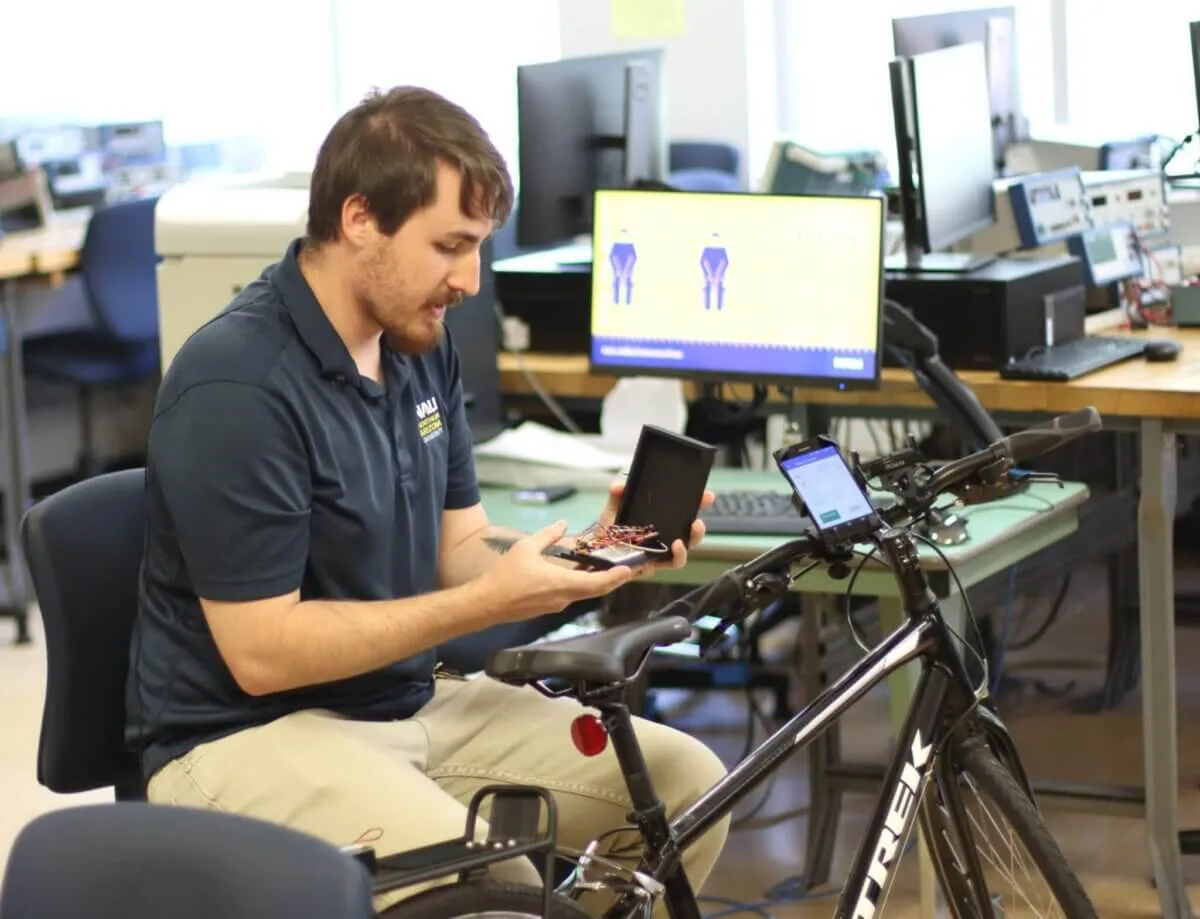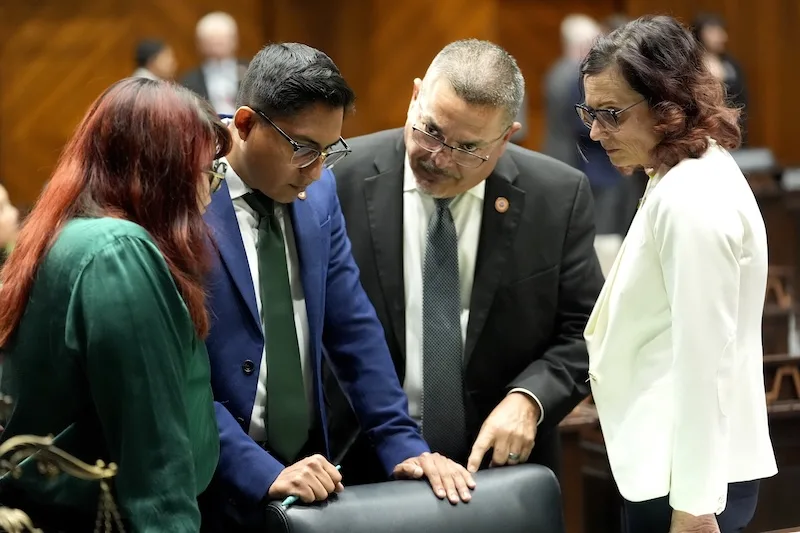
Joshua Garot examines the sensor of a prototype he and several other NAU students developed to make bicycling safer. This photo was taken inside an electrical engineering lab on the Northern Arizona University campus in Flagstaff on April 1, 2022. (Photo by Troy Hill/Cronkite News)
The team hopes its Instrumented Bike project will lead to increased bicycle use across the US.
FLAGSTAFF – A team of Northern Arizona University engineering students and professors has created a sensor that connects to a bicycle to detect dips and jolts in pathways, identifying pavement and dirt in need of repair.
The prototype, housed in two small black boxes attached above the bike’s rear wheel, sends the information to an app on the rider’s phone, which connects to a larger network that local municipalities can access to schedule repairs to bike paths and increase bike safety.
The team hopes its Instrumented Bike project will lead to increased bicycle use across the United States, which isn’t known for widespread day-to-day bicycle transportation.

“We kind of have this category of bicyclists that we call ‘interested but concerned,’ or maybe they’re interested in using a bike, but they don’t if they don’t feel safe,” said Brendan Russo, an associate professor of civil engineering at NAU who worked on the capstone project—meaning that for some team members, it’s the culminating project of their educational careers.
The idea came about when members of the team, which is a mix of graduate and undergraduate students, noticed that cars and other vehicles have such sensor systems, and they wondered why one doesn’t exist for bicycles. For example, Ford Motor Co., Detroit, and the company Tactile Mobility are using tactile sensors to map city’s streets and locate potholes.
RELATED: As Tourism Rises, Sedona’s Free Shuttles Ease Parking Problems
“We thought that it would be a really good opportunity for us to start a project on how do we connect bicycles to build a network for cyclists,” said Chun-Hsing Jun Ho, a professor of civil engineering and the team’s leader.
The team is researching ways to integrate the sensors into bike designs, and it’s looking for a company to manufacture the sensors.
Looking for the latest Arizona news? Sign up for our FREE daily newsletter.
Politics

Democrats clear path to bring proposed repeal of Arizona’s near-total abortion ban to a vote
Democrats in the Arizona Senate cleared a path to bring a proposed repeal of the state's near-total ban on abortions to a vote after the state's...

It’s official: Your boss has to give you time off to recover from childbirth or get an abortion
Originally published by The 19th In what could be a groundbreaking shift in American workplaces, most employees across the country will now have...
Local News

Kari Lake calls on Arizona county sheriffs to enforce 1864 abortion ban
Republican candidate for US Senate Kari Lake on Saturday seemed to solidify her support for Arizona’s total abortion ban and called on county...

Where to buy farm-fresh eggs in Tucson
Once you’ve tasted farm-fresh eggs, it’s hard to go back to the store-bought variety. Not only do farm-fresh eggs taste better and have...




